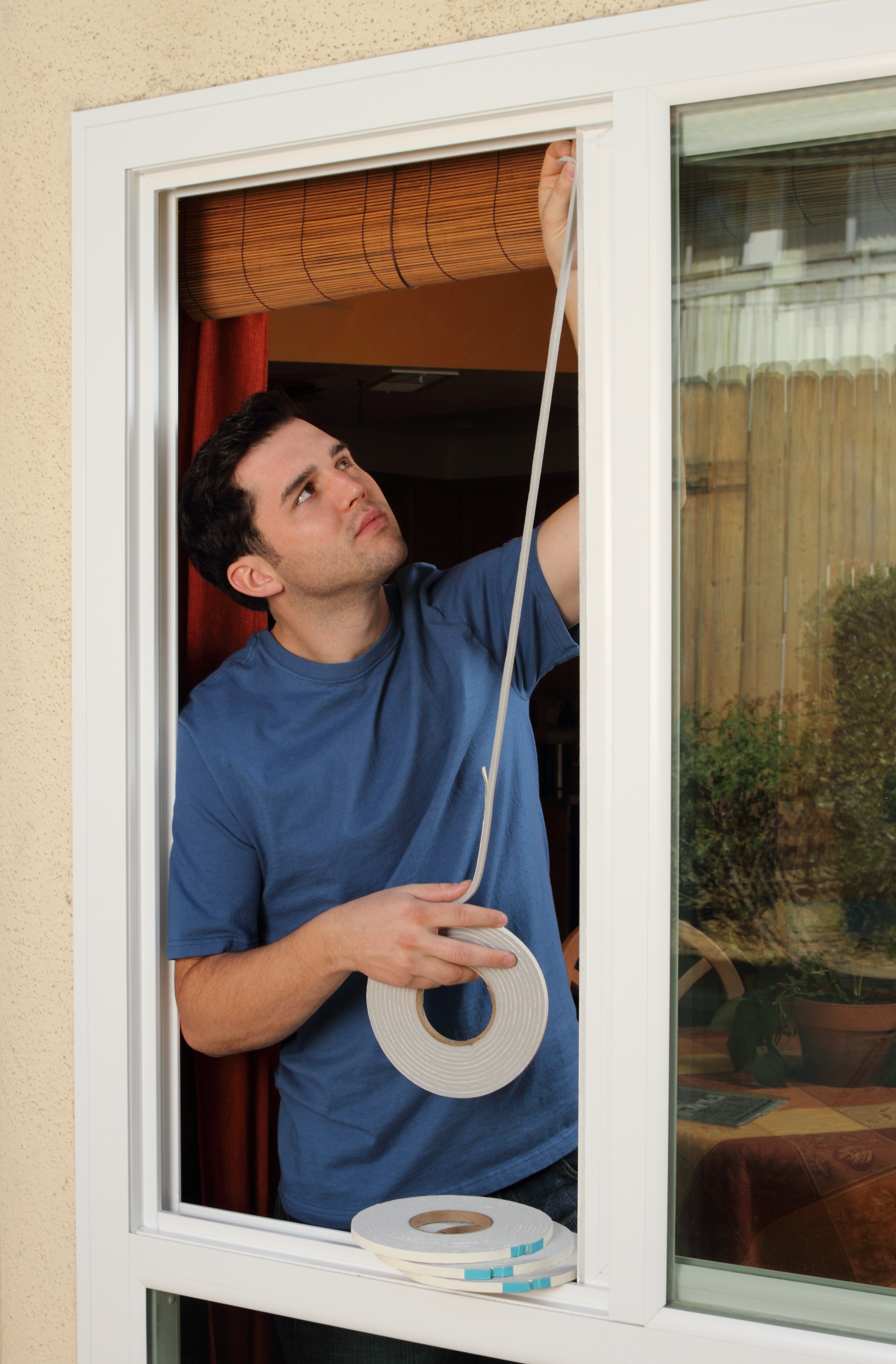
Reducing the amount of air that leaks in and out of your home is a cost-effective way to cut heating and cooling costs, improve durability of HVAC equipment, increase comfort, and create a healthier indoor environment. Here are a few tips to get started:
- Caulk and weatherstrip doors and windows that leak air.
- Caulk and seal air leaks where plumbing, ducting, or electrical wiring comes through walls, floors, ceilings, and soffits over cabinets.
- Install foam gaskets behind outlets and switch plates on walls.
- Inspect dirty spots in your insulation for air leaks and mold. Seal leaks with low-expansion spray foam made for this purpose and install house flashing if needed.
- Look for dirty spots on your ceiling paint and carpet, which may indicate air leaks at interior wall/ceiling joints and wall/floor joists and caulk them.
- Cover single-pane windows with storm windows or replace them with more efficient double-pane low-emissivity windows.
- Use foam sealant on larger gaps around windows, baseboards, and other places where air may leak out.
- Cover your kitchen exhaust fan to stop air leaks when not in use.
- Check your dryer vent to make sure it is not blocked. This will save energy and may prevent a fire.
- Install door bottoms and thresholds that have pliable sealing gaskets.
- Keep your fireplace flue damper tightly closed when not in use.
- Seal air leaks around fireplace chimneys, furnaces, and gas-fired water heater vents with fire-resistant materials such as sheet metal, sheetrock, or furnace cement caulk.
Source: Energy.gov


